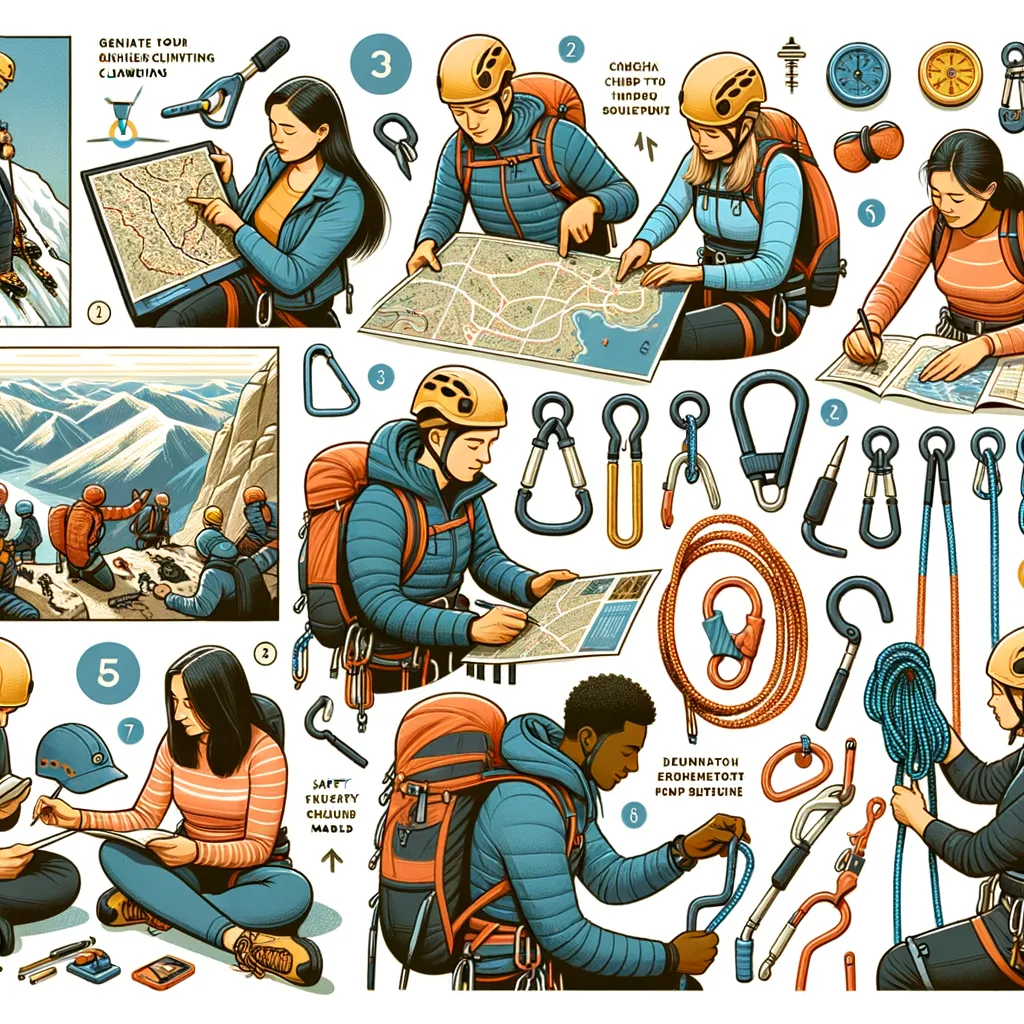How to Start Mountain Climbing: A Beginner’s Guide
Welcome, adventurous parents! Are you looking for a family activity that combines physical exercise, mental challenge, and breathtaking views? Look no further—mountain climbing could be your next great adventure. Starting a new hobby, especially one as ambitious as mountain climbing, can be daunting. But fear not! This guide is designed to help you and your family take those first steps up the mountain safely and enjoyably.
Understanding the Basics of Mountain Climbing
Before we dive into the specifics, let’s clarify what mountain climbing involves. It’s more than just hiking up a tall hill. Mountain climbing can include scaling rock faces, crossing glaciers, and navigating through various terrains at higher altitudes. Each type of climb requires different skills and preparations.
Why Mountain Climbing?
Mountain climbing offers numerous benefits, from physical fitness to mental well-being. It improves cardiovascular health, builds muscle strength, enhances endurance, and challenges your problem-solving skills. Moreover, the sense of achievement and breathtaking views you’ll experience at the summit make all the effort worthwhile. It’s a fantastic way to bond with your family, creating lasting memories and sharing the triumphs and challenges of each climb.
Getting Started with Mountain Climbing: A Step-by-Step Guide for Beginners
1. Research and Education
The first step in your climbing adventure is to arm yourself with knowledge. Read books and online resources about mountain climbing to understand the basics of the sport. Familiarize yourself with the different types of climbing, safety procedures, and necessary equipment. It’s also highly recommended to take a beginner’s course in mountain climbing. Many climbing clubs and outdoor centers offer courses tailored to families and beginners.
2. Choose the Right Gear
Investing in the right gear is crucial for a safe and comfortable climbing experience. Start with the basics: a sturdy pair of climbing shoes, a comfortable and durable backpack, a helmet, and the appropriate clothing. Depending on the type of climbing you plan to do, you may also need ropes, harnesses, carabiners, and other climbing aids. Visit outdoor retail stores where you can get expert advice on choosing the right equipment for your family.
3. Start Small
It’s important to begin your mountain climbing journey with achievable goals. Look for beginner-friendly mountains or climbing spots that are suitable for children and first-time climbers. Start with smaller, less challenging climbs to build your confidence and skills. This approach also helps you understand how your family adapts to climbing, allowing for a gradual increase in difficulty over time.
Mountain climbing is an exhilarating activity that can bring your family closer together while promoting physical health and mental resilience. As you prepare for your first climb, remember to prioritize safety, enjoy the learning process, and support each other through the challenges. Stay tuned for more tips and in-depth guidance in the next part of our series on how to start mountain climbing. Happy climbing!
This starter piece sets the tone and foundation for an engaging and informative long-form article aimed at parents interested in beginning mountain climbing with their family. It covers the preliminary steps needed to get started, laying the groundwork for more detailed follow-ups on safety, advanced techniques, and destination guides.
https://en.wikipedia.org/wiki/Camping

5 Essential Tips for Parents Preparing to Start Mountain Climbing: A Comprehensive Guide
Welcome to the exciting world of mountain climbing! As parents eager to embark on this adventurous journey with your family, it’s essential to prepare adequately to ensure a safe and enjoyable experience for everyone. While the earlier portion of our guide introduced you to the basics of mountain climbing and getting started, this section delves deeper into five crucial areas you must know as you prepare for your family’s climbing adventure.
1. Emphasizing Safety Above All
Safety should always be your top priority when it comes to mountain climbing. This involves not only having the right gear but also knowing how to use it properly. It’s imperative to ensure that all family members are equipped with a fitted climbing helmet, proper harnesses, and suitable footwear. Moreover, understanding weather conditions is critical. Always check weather forecasts before setting out and be willing to cancel plans if conditions turn unfavorable. A course in first aid and wilderness survival can also provide invaluable knowledge for unexpected scenarios.
2. Physical and Mental Preparation
Mountain climbing is as much a mental challenge as it is a physical one. Preparing yourselves mentally involves setting realistic goals and maintaining a positive attitude, especially when facing difficulties. Physically, you should engage in regular exercise to build strength, endurance, and flexibility. Activities such as hiking, swimming, and yoga can be beneficial for climbers of all ages. It’s also essential to simulate climbing scenarios; this could include indoor rock climbing sessions that many climbing gyms offer, providing a safe environment to learn and practice.
3. Learning to Read the Mountain
Understanding the terrain is crucial for successful mountain climbing. This means learning to read topographical maps and familiarizing yourselves with the route you plan to take. Knowing how to navigate with a compass and GPS can be lifesaving skills in the wilderness. Teach these skills to your children gradually, making it a fun and engaging learning process. Start with simple navigation exercises during your hikes or use mobile apps that simulate real-life navigation scenarios.
4. The Importance of a Balanced Diet and Hydration
Never underestimate the power of a well-balanced diet and staying hydrated, especially at high altitudes where the body dehydrates much quicker. Ensure your diet includes plenty of carbohydrates for energy, as well as proteins and fats for sustained power. Pack energy-rich foods that are also lightweight and non-perishable, such as nuts, dried fruits, granola bars, and jerky. Hydration packs are more convenient for climbing than water bottles, as they allow for easy access to water without having to stop and unpack.
5. Developing a Climbing Community
Finally, becoming part of a climbing community can significantly enhance your family’s climbing experience. Communities provide support, knowledge sharing, and the opportunity to participate in group climbs which can be incredibly beneficial for beginners. Joining local climbing clubs or online forums dedicated to mountain climbing can connect you with experienced climbers who can offer advice, share their experiences, and sometimes even become mentors. Participating in community events not only helps improve your climbing skills but also builds lasting friendships and connections within the climbing world.
Preparing for your mountain climbing journey involves a comprehensive approach that covers safety, physical and mental preparation, understanding the terrain, maintaining proper nutrition and hydration, and becoming part of a supportive climbing community. By focusing on these key areas, you’ll set a strong foundation for your family’s climbing adventures, ensuring not only the safety and well-being of your loved ones but also enriching your experience with the joy and fulfillment that comes from conquering new heights together. Mountain climbing is a remarkable way to bond as a family, challenge yourselves, and create unforgettable memories in the great outdoors. As you continue to prepare, remember that every step, no matter how small, is progress towards reaching your summit.
Disclaimer
The articles available via our website provide general information only and we strongly urge readers to exercise caution and conduct their own thorough research and fact-checking. The information presented should not be taken as absolute truth, and, to the maximum extent permitted by law, we will not be held liable for any inaccuracies or errors in the content. It is essential for individuals to independently verify and validate the information before making any decisions or taking any actions based on the articles.



